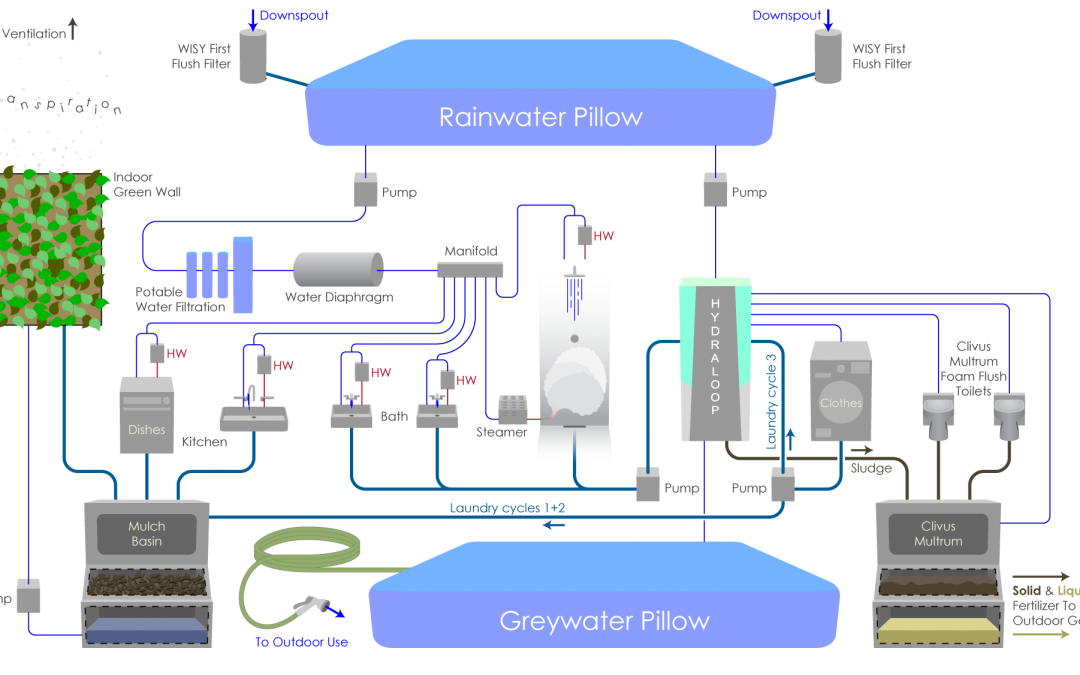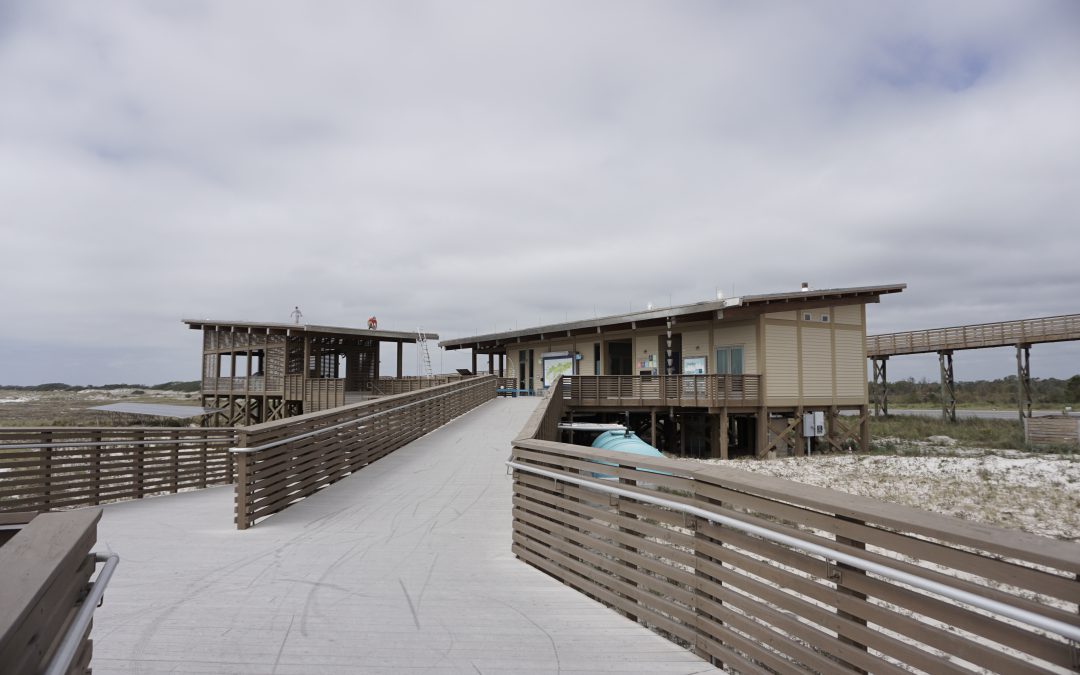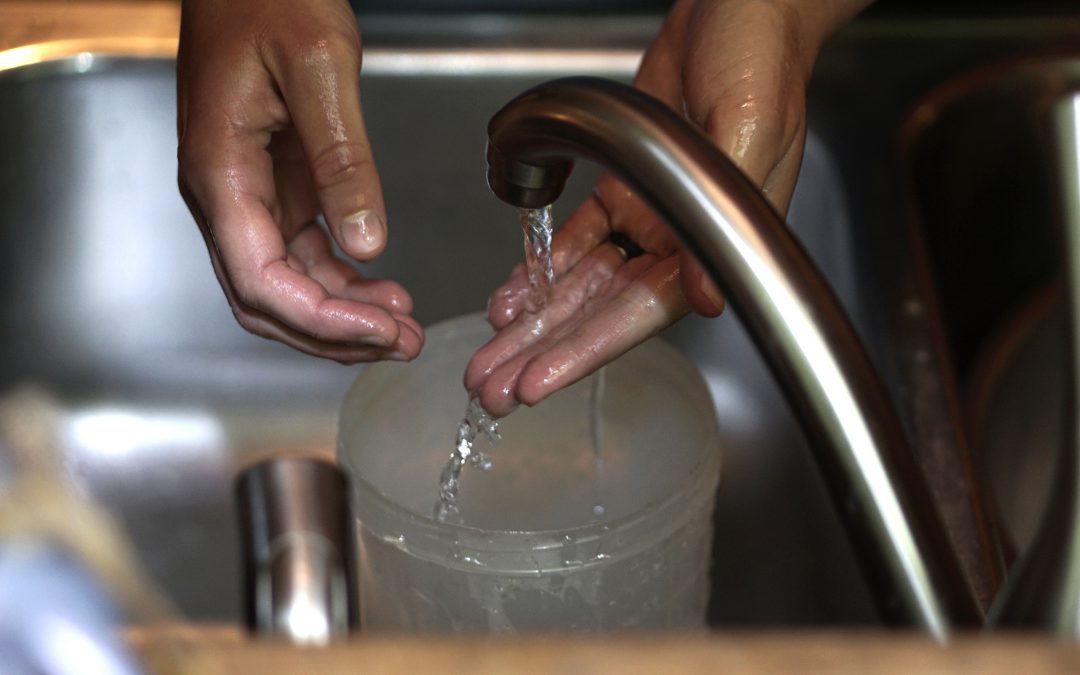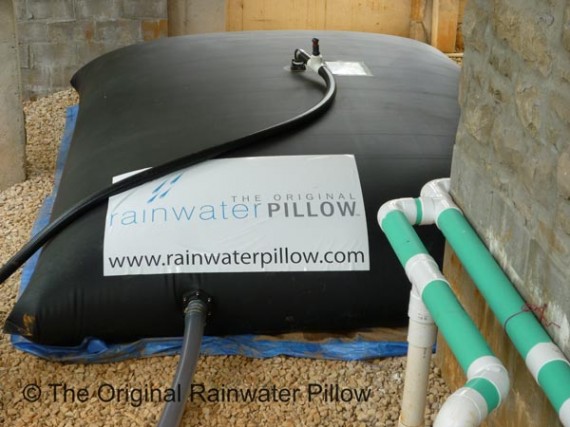
by William | Apr 28, 2021 | Net Zero
Dear Readers,
I think this is Round III of our plan to harvest and treat all of our water on-site…it may actually be round IV…or V. In truth, what version of the ideal we have bounding about in our brains does not matter. What matters, is this is what we have officially just shipped off for interpretation by code!
The goal we have set for ourselves is to meet the Water Petal as set by the Living Building Challenge, while also meeting PA Code. We want to not only maintain, but enhance, the safety and health of our surrounding natural environment and communities.
What you are about to read is essentially how we explained our system to the DEP. However, when I had some loved ones proof-read our email, they said it was overwhelming and boring.
So, I still sent our extensive email away to code.
While it is still certainly overwhelming, code does not care if it is boring. They just want to do their job and make sure we don’t jeopardize the health or integrity of our environment or neighbors.
But, to make it interesting for those who do find this overwhelming and boring, I am going to explain it in the context that you are a little, adorable, droplet of water. While small in stature, you are incredibly significant to our family’s, and the Land of the Laurel’s, survival.
My dear little droplet, your life has no real beginning or end. You just are. You belong to, and are a cycle that determines the life or death of every living being on this planet. For our story, we will begin with one of your many falls.
All excited and condensed with so many other droplets, it is now the time for you to let the weight of your condensation be pulled by gravity to the earth. Like a sneeze that has just built up for way too long, you finally let it go!
WeeeEEEEEEEEEEEEEEEEE!!!!!

by William | Nov 4, 2020 | Small Footprint
Dear Readers,
Alligators! Cottonmouths! Sharks! Oh my!!
Our honeymoon 3.0 (celebrating our two year anniversary!) was certainly filled with all three…all thanks to the beautiful, nature-loving, audacious and adventurous, Farren (oh, and her fellow partner in wildlife and everyday life endeavors, Tom!). The two of them introduced William and I to the gulf of Alabama in a bold and very real way. Within an hour of being there, I already had a full-out biology lesson on seashells and their former inhabitants…especially about who eats who…I never knew snails were responsible for that lil’ perfectly formed hole you sometimes see on small seashells (which I always thought was just a convenience for making seashell jewelry)…they just drill their little snail tongues right on in there and suck up the insides…
Beyond the seashells, Farren and Tom, both working for the environmental integrity of Gulf Shores, Alabama, took us on many adventures. We went on excursions through the park and conservation areas, unintentional swims with blacktip sharks, alligator sightings, and a personal tour of a real-life Living Building Challenge certified building: Alabama’s Gulf State Park Interpretive Center…

by William | May 20, 2020 | Healthy Living, Net Zero, Small Footprint
In many relationships there comes a time when things get, well…boring. You and your spouse have a routine, and it works. All in all, in a day, things get done while there still exists room for some excitement. You love them, they love you, life is moving forward. It is all a happy kind of ‘mhm.’ Well, William and I decided to spice things up a bit.
We did an experiment.
For 24 hours we measured the exact amount of water we used…washing our hands, brushing our teeth, doing the dishes, laundry, flushing the toilet…it was enlightening! I highly recommend it for any couple who finds themselves in a state of blissful ‘mhm.’
But in all seriousness, we wanted to know what our daily water usage was so that we can accurately size our Rainwater Pillow to fulfill all of our H2O necessities. Beginning at 12 am on a Monday morning when both of us had the opportunity to stay home all day, William and I diligently recorded the amount of water we used when we…..
Flushed the toilet
Washed our hands
Brushed our teeth
Did a load of laundry
Did dishes
Gave water to the chickens and dogs
Grabbed a glass of water to drink or cook with
Took a shower

by William | May 13, 2020 | Net Zero, Small Footprint
Dear Readers,
In addition to our future home, The Seed, being designed upon pins and with super thick, crazy well-sealed walls, we want all of the water that we use to be gathered from precipitation and stored in a pillow. This pillow will be stored within our building envelope (so that it is insulated) and underneath our floor. Imagine a giant waterbed in your basement that’s purpose is to provide you with showers and clean drinking water. That’s it.
The rainwater collection system we intend to use is called The Original Rainwater Pillow, created and sold by a gentleman named Jim Harrington. Based in Georgia, he was inspired to develop the rainwater pillow in 2008 during a period of intense drought in his area. Six years later, in 2014, his Original Rainwater Pillow won the U.S. Green Building Council’s (USGBC) Best of Building award for Best Product for Water Efficiency! We are excited to test out the Original Rainwater Pillow in The Seed…but first, how does it work??
How it works:
The Pillow tanks are specifically built horizontally to fit into ‘wasted spaces.’ Think crawl spaces, under decks or porches, basements…that way, the need for excavation for cisterns or a giant tank in the yard is eliminated. And what is additionally so genius about the Pillows, is that they are relatively easy to install- like a deflated air mattress, they are easy to transport and lighter to move around (which is wonderful for prefabrication mind-sets). We intend to keep our Pillow within the thermally controlled building envelope of our home: above the pins and right below our floor.
Rainwater harvesting all begins with rain and a roof. Your roof is kind of like your ‘rain catcher’…the larger the square footage that your roof covers, the more potential you have for more water. As the rain runs from your roof to the gutter system, it will travel to your downspouts and then go through a pre-filter. The pre-filter is intentionally ‘coarse.’ It allows water to move quickly through it during heavy downpours, while simultaneously separating leaves or other large debris.




